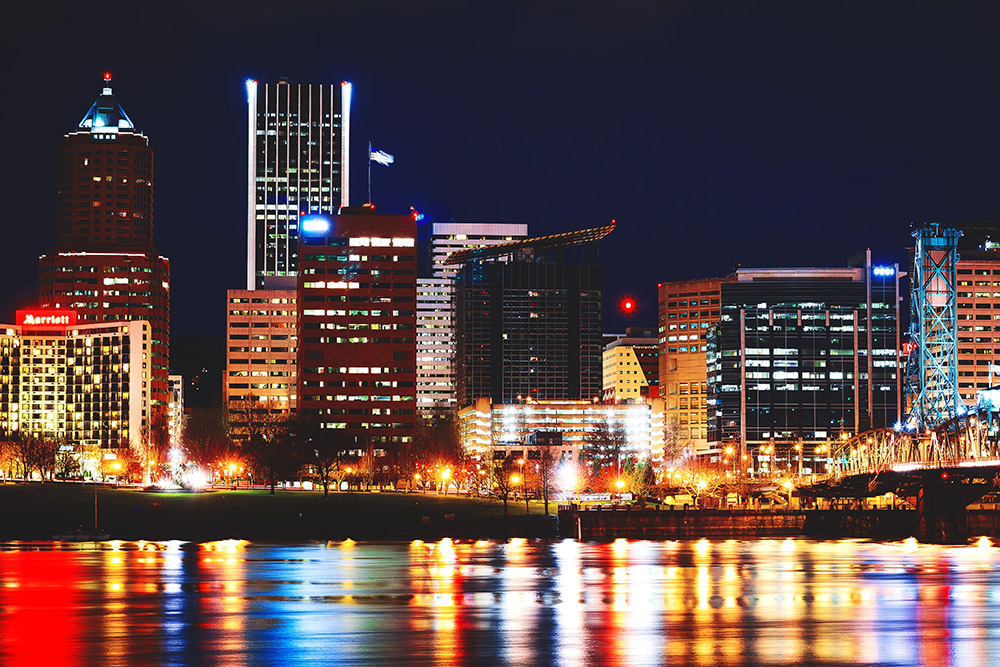
Portland has a serious issue on its hands. The city has the largest number of Unreinforced Masonry Buildings on the West Coast, totalling over 1600. Why is this a problem? First, it’s necessary to understand what a URM is.
An URM is a type of building where load bearing walls, non-load bearing walls and other structures such as chimneys are made of masonry material – brick, adobe, cinderblock, tile, etc. – and are not braced by reinforcing material such as rebar in concrete. In Portland, these buildings were constructed between 1870 and 1960.
These URMs make Portland particularly vulnerable to a catastrophic earthquake. The buildings would become potential death traps, especially the multi-story buildings where the floor joists are not attached to walls. The earth surrounding would only need to shift a few inches to cause the floors to detach. Because of this risk, Portland City Council is considering enforcing mandatory seismic refits.
Here’s what you need to know about the mandate:
What is it?
The mandate is a continued effort by the City of Portland to provide solutions to the serious safety issues Portland faces in regards to potential earthquakes or other major seismic activity. The city began upgrading its seismic requirements back in 1995 when building codes started catching up to concerns about a Cascadia Subduction Zone earthquake. In 2004, the city council amended the seismic retrofit code, and in 2014 began pairing various city bureaus with citizen committees to develop recommendations to reduce the risks associated with these URMs.
The new mandate being proposed will require owners of URM buildings to perform seismic upgrades on the buildings within the next 10 years.
Who does it affect?
The primary parties affected would be building owners, as they will be required to orchestrate and pay for the seismic upgrades. Others affected would be any tenants or residents of the buildings being upgraded who may be displaced during the retrofit process.
When will it happen?
Voting on the mandate may happen as soon as April 2018, and, if passed, building owners will have 10 years to complete the upgrades. If they fail to make these changes in that time, they will be subject to incremental fines, and eventually the city will deny building occupancy permits.
Where will it happen?
The mandate will affect buildings within the City of Portland, where there are over 1600 URM buildings. Some areas affected will be Multnomah Village, where there are 20 or so URMs, and Northwest 23rd Ave. However, these buildings are scattered far and wide across the city.
What is at stake?
The goal of the city’s mandate is to ensure the safety of Portland residents who reside, run businesses and conduct activities in and around these buildings. Given the possibility of major seismic activity, the goal is to make these buildings as safe as possible.
However, there is a large burden put on the owners of the buildings, as well as the tenants. The City Council is coming up against resistance from building owners due to the extent of upgrades it is proposing as requirements and the cost and logistical issues associated with each.
The upgrades will be expensive, although there isn’t an accurate estimate of how much it will cost per building, and tenants may end up being displaced while the upgrades are being performed.
If property owners cannot afford the upgrades, they will either be required to sell the building or have it demolished.
As you can tell, it is a very complex issue with high stakes involved on both sides. If you have more questions about the mandate, please contact us. We will also be continuing to post updates as we get more information about the mandate.
Read more about the Unreinforced Masonry (URM) Seismic Retrofit Project here
Update 6/21/2018
The City of Portland has unanimously passed a resolution that will create policies for retrofits on URMs. Protests during the May 9 hearing led to several amendments to the original policy, including lengthening the timeline for mandatory retrofits, expediting the timeline for informational placarding on URMs and the development of work groups devoted to finding financial solutions to the problem.
The deadline for commercial URM buildings to retrofit roofs is now 20 years, whereas originally they had mandated the repairs to occur within 10 years. The council also removed the requirement of connection floors to walls with bolts.

Comments are closed.